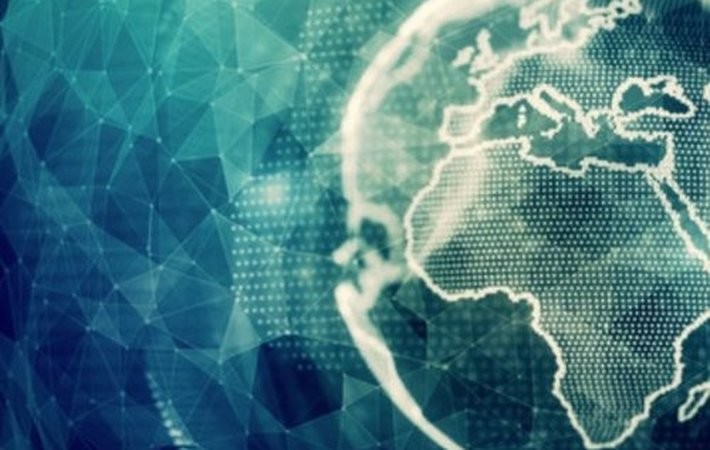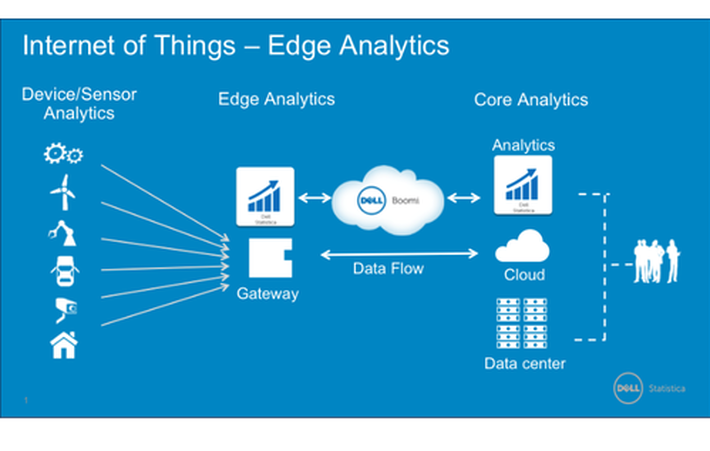
Published on 11/18/2016 | Technology
The Internet of Things (IoT) promises to change everything by enabling “smart” environments (homes, cities, hospitals, schools, stores, etc.) and smart products (cars, trucks, airplanes, trains, wind turbines, lawnmowers, etc.). I recently wrote about the importance of moving beyond “connected” to “smart” in a blog titled “Internet of Things: Connected Does Not Equal Smart”. The article discusses the importance of moving beyond just collecting the data, to transitioning to leveraging this new wealth of IoT data to improve the decisions that these smart environments and products need to make: to help these environments and products to self-monitor, self-diagnose and eventually, self-direct.
But one of the key concepts in enabling this transition from connected to smart is the ability to perform “analytics at the edge.” Shawn Rogers, Chief Research Officer at Dell Statistica, had the following quote in an article in Information Management titled “Will the Citizen Data Scientist Inherit the World?”
“Organizations are fast coming to the realization that IoT implementations are only going to become more vast and more pervasive, and that as that happens, the traditional analytic model of pulling all data in to a centralized source such as a data warehouse or analytic sandbox is going to make less and less sense.
So, most of the conversations I’m having around IoT analytics today revolve around looking at how companies can flip that model on its head and figure out ways to push the analytics out to the edge. If you can run analytics at the edge, you not only can eliminate the time, bandwidth and expense required to transport the data, but you make it possible to take immediate action in response to the insight. You speed up and simplify the analytic process in a way that’s never been done before.”
So I asked Shawn and his boss John Thompson, General Manager of Advanced Analytics at Dell, to help me understand what exactly they mean by “analytics at the edge.” It really boils down to these questions:
Are we really developing analytics at the edge?
If not, then what sorts of analytics are we performing at the edge?
Where are the analytic models actually being built?
And finally, what the heck does “at the edge” really mean?
So let’s actually start with that last question: What does “at the edge” really mean?
“At the edge” refers to the multitude of devices or sensors that are scattered across any network or embedded throughout a product (car, jet engine, CT Scan) that is generating data about the operations and performance of that specific device or sensor.
For example, the current Airbus A350 model has close to 6,000 sensors and generates 2.5 Tb of data per day, while an even newer model – expected to be available in 2020 – will capture more than triple that amount! It is becoming more and more common for everyday common products to have hundreds if not thousands of embedded sensors that are generating readings every couple of seconds on the operations and performance of that particular product.
But collecting these huge and real-time volumes of data doesn’t do anything to directly create business advantage. It is what you do with that data that drives the business value, which brings us to…

Are we really “performing analytics” (collecting the data, storing the data, preparing the data, running analytic algorithms, validating the analytic goodness of fit and then acting on the results) at the edges, or are we just “executing the analytic models” at the edges? It’s one thing to “execute the analytic models” (e.g., scores, rules, recommendations) at the edges, but something entirely different to actually “perform analytics” at the edges.
Per Shawn and John, “We can deliver analytic models to any end point. We can execute the analytic models in any environment – large or small. We can execute all the steps in performing analytics in a wide range of environments, but there are limits at the edge. The limits are on the robustness of the environment (i.e. cannot deliver an executable to an environment that does not have the memory or processing power to store it or execute it. We cannot change the laws of physics…;-).)”
In our airplane example with 6,000 sensors on the plane generating over 2.5 Tb of data per day, how are we performing the analytics at the end?
Per John and Shawn, if the jet engine has a place to house a Java Virtual Machine (JVM) and an analytic model (i.e., lightweight rules based model), then we can execute the model on the engine itself. If the model streams the data to a network, we can execute the analytic model on a gateway, or intermediate server.
Think of the network as having concentric rings. Each ring can have many servers. Each server can do either – either executing an analytic model or building the analytic models. Now think of many network networks with concentric rings that interlock at various intersections. Analytics can be at any or all levels including at the core, in a data center or in the cloud.
Per Shawn, “By working in tandem with Dell Boomi, we’ve given users the ability to deploy JVM’s with the analytic models on any edge device or gateway anywhere on the network or device. This edge scoring capability enables organizations to address nearly any IoT analytics use case by executing the analytic models at the edge of the network where data is being created.”
Okay, so we “execute” the pre-built modes at the edge, but we actually build (test, refine, test, refine) the analytic models by bringing the detailed sensor data back to a central data and analytics environment (a.k.a. the Data Lake). Figure 3, courtesy of Joel Dodd of Pivotal, shows the data flow and the supporting analytics execution.
Final point, even if you are doing all the sensor/IoT analysis at the edges, you are likely still going to want to bring the raw IoT data back into the data lake for more extensive analysis in order to house the detailed IoT history. For example, we have major economic cycles every 4 to 7 years. You might want to quantify the impact of these economic changes on your network demand and performance. That would eventually require 8 to 14 years of data. And that’s why you are going to want a data lake as the foundation of the transition from a “connected” IoT world to a “smart” IoT world.
This article was originally posted on LinkedIn.